| In the spring and early summer of 2020 I decided to have some fun with a one-shot-color CCD camera (SBIG ST-2000XCM) from our backyard. There are some limitations to using one-shot-color (OSC) cameras for astrophotography. That said, many of the "brighter" (i.e., not-so-dim) deep-sky objects can still be captured from a light-polluted backyard. So I attached our camera to a 6" refractor (TMB-152) and had a bit of fun. I decided to employ an IDAS LPS-2 filter. This is a light-pollution-suppression filter, which I hoped would reduce some of the effects of light pollution. Overall, I new that any images taken from our backyard will show features and likely no dim details that will be captured by extended exposures from a dark-sky site. But that was not the objective of any of these shots. |
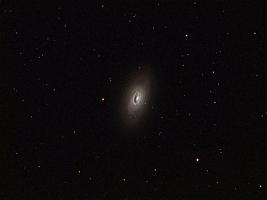 |
I started out in April, which was the
latter stage of galaxy season, so the between the nights of
April 19 and 22 I gathered 13 5-minute subs of M64, the
Black-Eye galaxy.
|
| Many globular clusters are visible at this time of year as well. Outside the showpiece targets of this time as M13 and others that for whatever reason I had shot multiple times in the past (M5, specifically), it dawned on me that there were others out and about that I hadn't given some time to. So I started with M3 on May 7. |
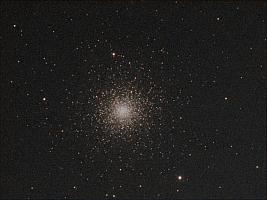 |
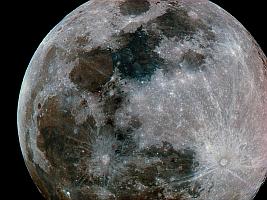
|
The same night that I shot M3 (May 7) the full Moon presented itself as well. A parameter of my "fun with a OSC camera" project was not only to shoot even when the Moon is out, but to shoot that as well. So I took a shot of it.
A single 1/100-second exposure. |
After M3, which I have shot in the past, I looked around for other globulars up this time of year, and this time without the LPS filter. I substituted the recommended and provided UV/IR filter instead. I found M10 and M107. For these, I upped the subexposure times to 10 minutes instead of 5 as an experiment, and liked the results enough to keep them.
Here is M10. |
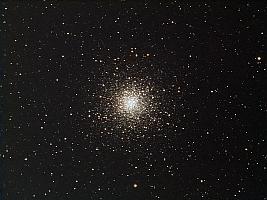 |
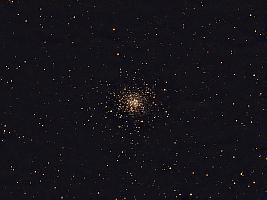 |
And here is M107. |
| The May 7 shot of
the Moon impressed me with how much of the disk the combination
of camera and scope covered that I figured a small mosaic (2 x
1) would yield the entire available disk. Here is an attempt on
May 30. Both sections of the mosaic were 1/100-second
exposures. |
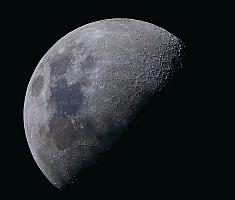 |
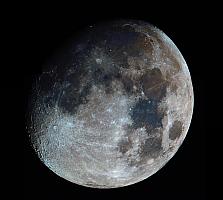
|
Here is another 2 x 1 mosaic (also
1/100-second exposures) taken on June 2. |
| And here is the Full Strawberry Moon of
June 5, 2020. Which I personally refer to as my Blood Moon of
2020. Details below. |
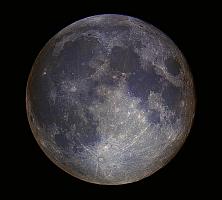 |
So why is the June 2020 full moon my Blood Moon? It rose late
that evening in the vicinity of some trees and through a bank of
thin clouds. That presented itself as a nice opportunity at an
HDR nightscape composite. Before shooting it with the CCD/TMB
refractor, I thought it might be a cool subject with our
DSLR/small scope or telephoto lens. Unfortunately, as I was
setting up our camera tripod (an easily more than 30-year old
tripod handed down to my wife from her cousin) broke - one of
its leg extenders twisted irrecoverably. Attempts to fix it
ended up pinching a tiny portion of my hand, resulting in a tiny
internal wound: a little welt in my palm that looked like a
wound that didn't penetrate my epidermis. Odd and interesting,
nothing to be concerned about, but definitely a tiny bit of
blood. So I call that image my Personal Blood Moon.
The color and contrast balance is pretty interesting. My
exposure times for the Moon shots were all the same (1/100 of a
second), but the colors post-LPS filter are not the same and and
seem less dramatic than with the LPS filter. Something to look
deeper into. |
